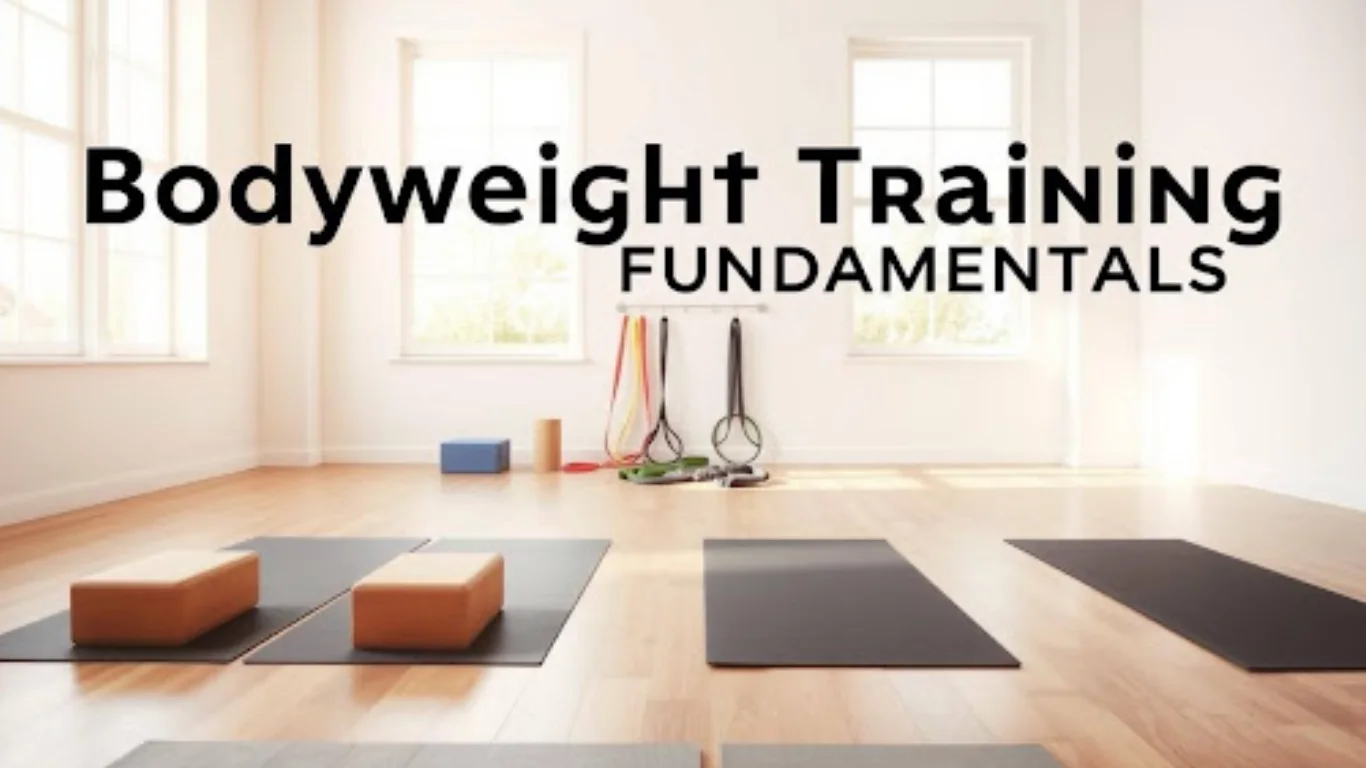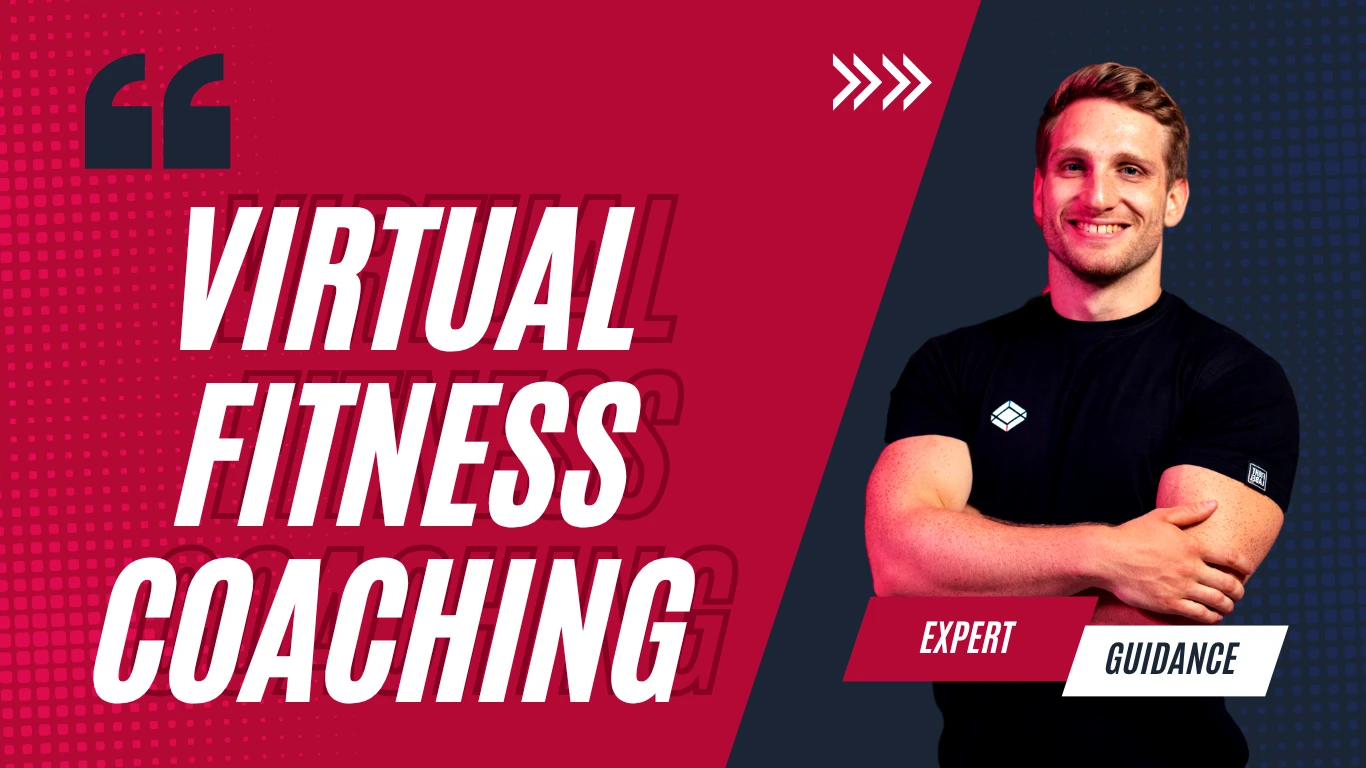One really good approach to keep in shape without using any Smart fitness trackers equipment is bodyweight exercise. This kind of exercise is easy and quick for raising general fitness since it makes use of your own body weight to offer resistance.
With equipment-free workouts, you can get a fantastic workout anywhere—home, at a park, or on travel—anywhere, including Bodyweight training’s adaptability lets you fit in a session whenever it would be most convenient for you, thereby helping you to keep to your fitness objectives and lead a healthy lifestyle wherever.
The Power of Bodyweight Training
Without any equipment, bodyweight training has become a quite successful approach for raising general fitness. This kind of exercise is flexible and easily available to reach fitness objectives since it uses the personal weight to offer resistance.
Benefits of Equipment-Free Workouts
Bodyweight training offers several key benefits, including convenience and cost-effectiveness.
Convenience and Accessibility
Convenience of bodyweight training is one of its main benefits. It may be done anywhere, at any time, without a gym membership or specific gear needed. Those with hectic schedules or those who would rather work out in the comfort of their own homes will find this to be the perfect fit.
Cost-Effectiveness
Additionally quite reasonably priced is bodyweight training. People can reach a good degree of fitness at low cost without the requirement of costly gym subscriptions or equipment. For those on a budget, bodyweight training appeals because of this feature.
Science Behind Bodyweight Exercise Effectiveness
Bodyweight training’s capacity to raise functional strength and encourage neural changes helps to explain its success.
Functional Strength Development
Through simultaneous engagement of several muscle groups, bodyweight workouts assist build functional strength. Every day activities depend on this kind of strength, which also increases general physical health.
Neurological Adaptations
Additionally improving neural adaptations, coordination, balance, and general physical awareness is bodyweight training. These adaptations are absolutely essential for raising performance in different kinds of physical exercise.
| Benefits | Description | Impact |
| Convenience | Work out anywhere, anytime | Increased adherence to workout routine |
| Cost-Effectiveness | No gym membership or equipment needed | Reduced financial burden |
| Functional Strength | Improves strength for daily activities | Enhanced overall fitness |
| Neurological Adaptations | Improves coordination and balance | Better physical performance |
Getting Started: Bodyweight Training Fundamentals
Before diving into bodyweight exercises, it’s crucial to assess where you stand in terms of fitness. This initial assessment will help tailor your workout routine to your current abilities, ensuring a safe and effective progression.
Assessing Your Current Fitness Level
To assess your fitness level, consider factors such as your cardiovascular endurance, muscular strength, and flexibility. You can start by performing simple tests like walking or jogging for 30 minutes, doing push-ups until exhaustion, or measuring your range of motion with basic stretches. Be honest with yourself about your capabilities to avoid overexertion.
Setting Realistic Goals
Once you’ve assessed your fitness level, setting realistic goals is the next step. Your goals should be specific, measurable, achievable, relevant, and time-bound (SMART). For example, you might aim to perform a certain number of push-ups within a month or complete a challenging bodyweight workout routine by the end of 12 weeks. Having clear goals will help maintain your motivation.
Creating Your Workout Space
Creating an appropriate workout space is vital for effective bodyweight training. Your workout area should be safe, free from distractions, and equipped with the necessary space to move around.
Indoor Options
For indoor workouts, consider clearing a room or corner of a room to provide enough space to move. You can use a yoga mat or a non-slip surface to improve grip and comfort during exercises. Ensure good ventilation and adequate lighting.
Outdoor Possibilities
Outdoor spaces like parks, backyards, or even rooftops can be ideal for bodyweight training. Look for areas with sturdy structures like bars or ledges that can be used for various exercises. Be mindful of the surface you’re working out on to avoid injuries.
By assessing your fitness level, setting realistic goals, and creating a suitable workout space, you’ll be well on your way to a successful bodyweight training journey. Whether you choose to work out indoors or outdoors, the key is to be consistent and enjoy the process.
Essential Bodyweight Exercises for Full-Body Fitness
Bodyweight training offers a versatile and efficient way to improve overall fitness, targeting various muscle groups without the need for any equipment. By incorporating a range of exercises that work on different parts of the body, individuals can achieve a full-body workout that enhances strength, flexibility, and endurance.
Upper Body Movements
Upper body workouts are crucial for building strength and improving posture. They target the muscles in the arms, shoulders, chest, and back.
Push-Up Variations
Push-ups are a fundamental exercise for the upper body, engaging the chest, shoulders, and triceps. Variations such as diamond push-ups, decline push-ups, and plyometric push-ups can increase the challenge and effectiveness.
Pull-Up Alternatives
While pull-ups are excellent for targeting the back and arms, alternatives like inverted rows, assisted pull-ups, and banded pull-ups can be just as effective for those who are unable to perform a full pull-up.
Lower Body Exercises
Lower body exercises are vital for building strong legs and improving overall mobility. They target the muscles in the legs, glutes, and calves.
Squat Progressions
Squats are a compound exercise that work multiple muscle groups in the lower body. Progressions such as bodyweight squats, sumo squats, and single-leg squats can help increase strength and challenge balance.
Lunge Variations
Lunges are another effective lower body exercise that target the legs and glutes. Variations include walking lunges, stationary lunges, and lateral lunges, which can help improve balance and strength.
Core Strengthening Techniques
Core strengthening is essential for improving stability, balance, and overall athletic performance. It targets the muscles in the abdomen, obliques, and lower back.
Plank Progressions
Planks are a fundamental core exercise that engage the entire core. Progressions such as side planks, plank jacks, and dynamic planks can increase the challenge and effectiveness.
Dynamic Core Movements
Dynamic core exercises like Russian twists, leg raises, and bicycle crunches target the core muscles from different angles, improving rotational strength and overall core stability.
| Exercise | Target Muscle Group | Level |
| Push-ups | Chest, Shoulders, Triceps | Beginner |
| Squats | Legs, Glutes | Beginner |
| Plank | Core | Beginner |
| Lunges | Legs, Glutes | Intermediate |
| Diamond Push-ups | Chest, Shoulders, Triceps | Intermediate |
| Single-leg Squats | Legs, Glutes, Balance | Advanced |
Smart Fitness Trackers: Your Digital Training Partner
The advent of smart fitness trackers has transformed bodyweight training into a more data-driven and engaging experience. These devices are designed to track various aspects of your workout, provide guidance, and keep you motivated throughout your fitness journey.
Tracking Performance Metrics
Smart fitness trackers are equipped with advanced sensors that allow for the tracking of performance metrics such as heart rate, steps taken, and calories burned. This data is crucial for understanding your progress and making necessary adjustments to your workout routine.
Heart Rate Monitoring
One of the key features of smart fitness trackers is heart rate monitoring. This allows users to track their heart rate in real-time, ensuring they’re working within their optimal training zones.
Movement Analysis
Many smart fitness trackers also offer movement analysis, providing insights into the quality of your movements and helping to identify areas for improvement.
Workout Guidance and Form Correction
Beyond tracking, smart fitness trackers can offer workout guidance and help with form correction. This is achieved through various technologies that analyze your movements and provide feedback.
AI-Powered Coaching
Some smart fitness trackers come with AI-powered coaching, offering personalized workout plans and real-time feedback to help you optimize your training.
Real-Time Feedback Systems
Real-time feedback systems are another feature that can significantly enhance your bodyweight training. These systems provide immediate insights into your performance, allowing for adjustments on the fly.
Motivation and Accountability Features
Staying motivated is a crucial aspect of any fitness journey. Smart fitness trackers often include features designed to keep you engaged and accountable.
Goal Setting and Achievement Tracking
Users can set fitness goals and track their progress over time. Achieving these goals can be a significant motivator.
Community and Competition Elements
Many smart fitness trackers also incorporate community and competition elements, allowing users to compare their progress with others and participate in challenges.
By leveraging these features, smart fitness trackers can be a powerful ally in your bodyweight training journey, helping you to stay on track, improve your form, and achieve your fitness goals.
Bodyweight Training Programs for Different Fitness Levels
From beginner to advanced, bodyweight training programs cater to diverse fitness needs. Whether you’re just starting out or looking to challenge yourself further, there’s a bodyweight training program suited to your level.
Beginner-Friendly Routines
For those new to bodyweight training, starting with simple and effective routines is crucial. These programs focus on building a foundation of strength and endurance.
7-Day Starter Program
A weekly program can help beginners establish a consistent workout habit. A sample 7-day routine might include:
- Push-ups: 3 sets of 10 reps
- Squats: 3 sets of 15 reps
- Planks: 3 sets of 30-second hold
Form-Focused Workouts
Proper form is essential in bodyweight training to prevent injuries and ensure effectiveness. Workouts that focus on form will typically involve slower movements and higher attention to detail.
Intermediate Workout Plans
Once you’ve built a foundation, intermediate workout plans can help you progress. These plans often involve more complex movements and higher intensity.
Circuit Training Approaches
Circuit training involves completing a series of exercises in quick succession with minimal rest in between. This approach is excellent for improving cardiovascular fitness and burning calories.
Split Routines
Split routines involve dividing your workout into days that focus on specific muscle groups. For example, you might do upper body exercises one day and lower body the next.
Advanced Bodyweight Challenges
For those who have mastered the basics and intermediate levels, advanced bodyweight challenges can provide the next level of progression.
Skill-Based Progressions
These involve learning and mastering more complex bodyweight skills, such as handstands or muscle-ups. Skill-based progressions require patience and practice.
Endurance-Focused Protocols
Endurance-focused workouts are designed to improve your ability to sustain activity over a longer period. This can involve longer circuits or higher repetition counts.
Overcoming Common Bodyweight Training Challenges
Despite its many benefits, bodyweight training comes with its own set of challenges that need to be tackled head-on. As you progress in your fitness journey, you may encounter plateaus, struggle with maintaining motivation, or face difficulties in adapting your workouts to different environments.
Plateaus and How to Break Through Them
One of the most common challenges in bodyweight training is hitting a plateau. This occurs when your body adapts to the exercises, and you no longer see improvements. To break through a plateau, consider changing your routine by introducing new exercises or modifying existing ones. For example, if you’ve been doing standard push-ups, try diamond push-ups or decline push-ups to challenge your muscles differently.
Increasing the intensity of your workouts is another effective way to overcome plateaus. This can be achieved by adding more repetitions, sets, or decreasing rest time between exercises.
Maintaining Motivation Without Equipment
Staying motivated without the aid of equipment or a gym environment can be challenging. One strategy is to set clear, achievable goals and track your progress. Celebrating small victories along the way can help maintain motivation.
Another approach is to vary your workouts to keep them interesting. This could involve trying new bodyweight exercises, joining online fitness communities, or following along with bodyweight training videos.
Adapting Workouts to Different Environments
Bodyweight training is highly adaptable to different environments, making it ideal for those who travel or have limited space at home. Travel-friendly routines can be as simple as a series of push-ups, squats, and lunges that can be done in a hotel room.
Travel-Friendly Routines
When traveling, it’s essential to maintain your fitness routine. A simple routine could include:
- Push-ups: 3 sets of 10 reps
- Squats: 3 sets of 15 reps
- Lunges: 3 sets of 10 reps per leg
- Plank: 3 sets of 30-second hold
Limited-Space Modifications
For those with limited space, bodyweight exercises can be modified to require even less room. For example, instead of doing full squats, you can do half squats or calf raises.
| Exercise | Standard Version | Limited-Space Version |
| Squats | Full squats | Half squats or calf raises |
| Push-ups | Standard push-ups | Wall push-ups or knee push-ups |
| Lunges | Walking lunges | Static lunges or alternating toe touches |
Progressive Overload Techniques Without Adding Weight
To avoid plateaus, it’s essential to apply progressive overload techniques in your bodyweight training regimen. Progressive overload refers to the gradual increase in the intensity of your workouts to challenge your muscles and promote continued growth and strength.
Increasing Repetitions and Sets
One of the simplest ways to achieve progressive overload is by increasing the number of repetitions or sets for each exercise. For example, if you’re doing three sets of ten push-ups, try increasing it to three sets of twelve or four sets of ten. This increase in volume challenges your muscles and promotes strength gains.
Adjusting Leverage and Body Position
Another effective method is adjusting leverage and body position to make exercises more challenging. This can be achieved through various techniques.
Elevation Changes
Changing the elevation of your body can significantly alter the difficulty of an exercise. For instance, placing your feet on a higher surface during push-ups increases the angle and challenges your upper body more.
Unilateral Variations
Switching to unilateral exercises, where you work one limb at a time, can also enhance the challenge. Examples include single-leg squats or single-arm push-ups, which require more control and strength.
Incorporating Tempo and Isometric Holds
Tempo training involves slowing down the tempo of your exercises to increase time under tension for your muscles. For example, taking four seconds to lower yourself during a push-up makes the exercise more challenging. Additionally, incorporating isometric holds at the peak of an exercise can further enhance muscle engagement and strength.
By incorporating these progressive overload techniques, you can continue to challenge yourself and make progress in your bodyweight training journey without the need for additional weights.
Nutrition to Support Your Bodyweight Training Journey
Fueling your body with the right nutrients is essential for maximizing the effectiveness of bodyweight training. A well-balanced diet supports your fitness goals by providing the necessary energy and aiding in recovery.
Fueling for Performance
To optimize your workouts, focus on consuming a balanced meal with complex carbohydrates and lean protein about 1-2 hours before exercising. This helps provide sustained energy and supports muscle function.
Recovery Nutrition Strategies
After your workout, it’s crucial to refuel with a mix of carbohydrates and protein within 30-60 minutes. This aids in muscle recovery and replenishes energy stores. Consider a post-workout smoothie or meal with a ratio of 3:1 or 4:1 carbohydrates to protein.
Hydration Guidelines
Adequate hydration is vital for physical performance and overall health. Aim to drink at least 8-10 glasses of water per day, and adjust according to your activity level and climate. Monitoring your urine color can also help gauge hydration levels; it should be pale yellow.
Conclusion: Your Equipment-Free Fitness Future
Embracing bodyweight training as a core component of your fitness routine can lead to a transformative equipment-free fitness journey. By leveraging the power of bodyweight exercises, supported by smart fitness trackers like Fitbit or Apple Watch, and fueled by proper nutrition, you can achieve a robust fitness future.
As you’ve learned, bodyweight training offers a versatile and effective way to improve your overall fitness without the need for expensive equipment. By incorporating the techniques and strategies outlined in this article, you can continue to challenge yourself and progress towards your fitness goals.
With a well-planned nutrition strategy and the right mindset, you’re poised to unlock your full potential and enjoy a lifelong journey of equipment-free fitness. Your fitness future is bright, and it’s time to take the next step towards a healthier, stronger you.
FAQ
What is bodyweight training?
Bodyweight training is a form of exercise that uses an individual’s weight as resistance to build strength, improve flexibility, and boost overall fitness without the need for any equipment.
How do I get started with bodyweight training?
To get started, assess your current fitness level, set realistic goals, and create a suitable workout space. You can begin with basic exercises like push-ups, squats, and lunges, and gradually progress to more challenging movements.
Can bodyweight training help with weight loss?
Yes, bodyweight training can be an effective way to lose weight when combined with a healthy diet and regular cardio exercise. It helps build muscle mass, which in turn increases metabolism and burns calories.
How often should I do bodyweight workouts?
The frequency of bodyweight workouts depends on your fitness goals and current level. For beginners, 2-3 times per week is a good starting point, allowing for rest days in between to aid recovery.
What are some essential bodyweight exercises?
Essential bodyweight exercises include push-ups, pull-ups, squats, lunges, planks, and various core strengthening techniques. These exercises target different muscle groups and can be modified or progressed based on fitness level.
How can smart fitness trackers enhance bodyweight training?
Smart fitness trackers can track performance metrics, provide workout guidance, offer real-time feedback, and include motivational features to help you stay on track with your bodyweight training.
Can I do bodyweight training while traveling?
Yes, bodyweight training is highly adaptable to different environments, making it ideal for travel. You can modify exercises to fit limited spaces or use bodyweight exercises that require minimal space, such as push-ups, squats, and lunges.
How do I progress in bodyweight training without getting bored?
To progress and avoid boredom, vary your workouts by incorporating different exercises, increasing repetitions and sets, adjusting leverage and body position, and incorporating tempo and isometric holds.
What role does nutrition play in bodyweight training?
Nutrition plays a crucial role in supporting bodyweight training by fueling workouts, aiding in recovery, and providing the necessary nutrients for muscle growth and repair. A balanced diet that includes protein, complex carbohydrates, and healthy fats is essential.
How can I stay motivated with bodyweight training?
Staying motivated can be achieved by setting realistic goals, tracking progress, varying workouts, and using smart fitness trackers that offer motivational features and community support.






